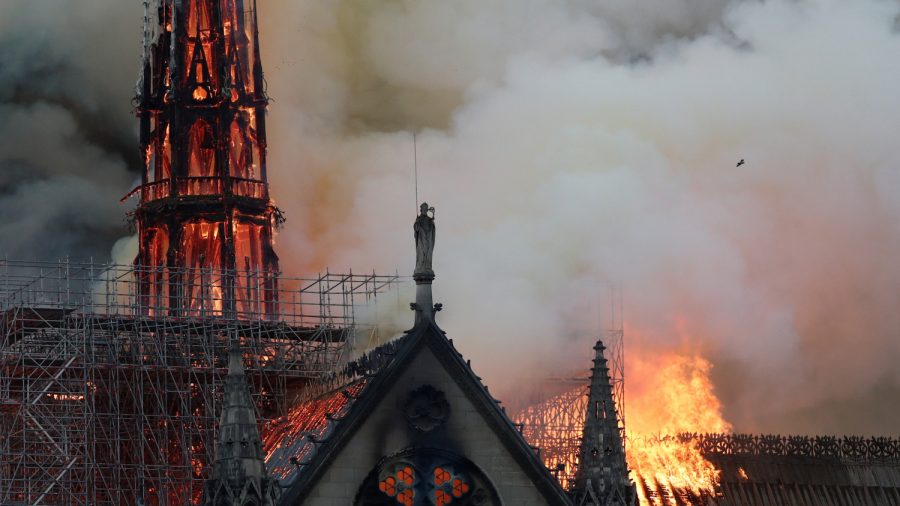A heritage expert is claiming that the damage to Notre Dame, the famed cathedral in Paris, was “bound to happen” after years of alleged neglect.
The cathedral suffered heavy damage from a colossal fire on April 15 that spread for hours before finally being put out the next day.
The cathedral, a UNESCO World Heritage site that is visited by 12 million to 14 million people a year, had a growing list of maintenance work, according to Jean-Michel Leniaud, president of the scientific council at the Heritage Institute.
“What happened was bound to happen. The lack of real upkeep and daily attention to such a major building is the cause of this catastrophe,” he told The Local. “This is not about looking for people to blame. The responsibility is collective because this is the most loved monument in the country.”

Claude Gauvard, a Middle Ages expert, said that the site has not always been treated well.
“The ongoing works finally got started—and it was high time, and perhaps even a little late. I went up to the foot of the spire (before the renovations began) and some of the brickwork was disjointed, held in place by a grate to prevent it falling,” Gauvard said.
Another expert said that the building was vulnerable because of the extensive renovations that were going on there before the blaze broke out.
A number of churches, synagogues, and temples have gone up in flames while under repair throughout history, Glenn Corbett, an associate professor of fire science at John Jay College in New York, told NBC.
“If there is a most vulnerable time for a church, it is when it is under construction because we get people who are using torches or welding or cutting, that are of course sources of ignition, to set the wood roof structure on fire,” Corbett said. Such sparks are often out of reach of firefighters, although the collapse of Notre Dame’s roof may have helped those fighting the fire by “putting the fire closer to them rather than up in the sky,” he said.


“Once the roof is consumed, all that burning debris is going to fall at the floor level and of course, everything that’s down there will be on fire,” Corbett added.
Others noted that the esteemed building seemed to hold up well overall despite the fire damage.
“I think we can be cautiously optimistic. It looked really terrible, of course, all of that wood on fire. But I think that silver lining, again, is that the structure did what it was designed to do. What we saw on fire was, largely, the wooden roof. And also the wood that served as the armature for that spire,” said Mitzi Kirkland-Ives, an associate professor in the Art and Design Department at Missouri State University.
“The ceiling itself of the structure was what we call ‘stone vaulting.’ So it’s a series of, essentially, arches, and a stone ceiling, essentially. And that was actually invented just before the Gothic period in order to prevent the spread of fire,” she added. “The vaulting seems to have done its job, to a large extent. A little bit of the webbing of the vaulting seems to have fallen. But largely, the structure of the building seems to be intact.”

